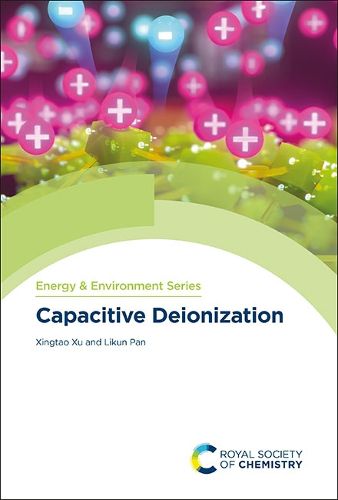Readings Newsletter
Become a Readings Member to make your shopping experience even easier.
Sign in or sign up for free!
You’re not far away from qualifying for FREE standard shipping within Australia
You’ve qualified for FREE standard shipping within Australia
The cart is loading…






The exploration of new-family desalination techniques has become increasingly important in recent decades. Capacitive deionization (CDI) has attracted multidisciplinary interest as a promising alternative to conventional desalination techniques of reverse osmosis and electroosmosis, due to several attractive features such as low energy consumption, environmental friendliness and high water utilization efficiency. CDI desalts saline water through storing ions in electrical double layers of porous carbons or by redox reactions with faradic materials. This will be the first book to specialise in all aspects of CDI and aims to showcase the fundamentals and progressive achievements of the research. Chapters will cover theoretical models, the expansion of new-family electrode materials, exploitation of new-concept CDI devices and applications of CDI in other new areas. In addition, it will provide new insights into future directions for the development of CDI. Edited by a founder of the field, the book will be of interest to those researching water desalination and purification across chemistry, materials science and environmental science.
$9.00 standard shipping within Australia
FREE standard shipping within Australia for orders over $100.00
Express & International shipping calculated at checkout
The exploration of new-family desalination techniques has become increasingly important in recent decades. Capacitive deionization (CDI) has attracted multidisciplinary interest as a promising alternative to conventional desalination techniques of reverse osmosis and electroosmosis, due to several attractive features such as low energy consumption, environmental friendliness and high water utilization efficiency. CDI desalts saline water through storing ions in electrical double layers of porous carbons or by redox reactions with faradic materials. This will be the first book to specialise in all aspects of CDI and aims to showcase the fundamentals and progressive achievements of the research. Chapters will cover theoretical models, the expansion of new-family electrode materials, exploitation of new-concept CDI devices and applications of CDI in other new areas. In addition, it will provide new insights into future directions for the development of CDI. Edited by a founder of the field, the book will be of interest to those researching water desalination and purification across chemistry, materials science and environmental science.